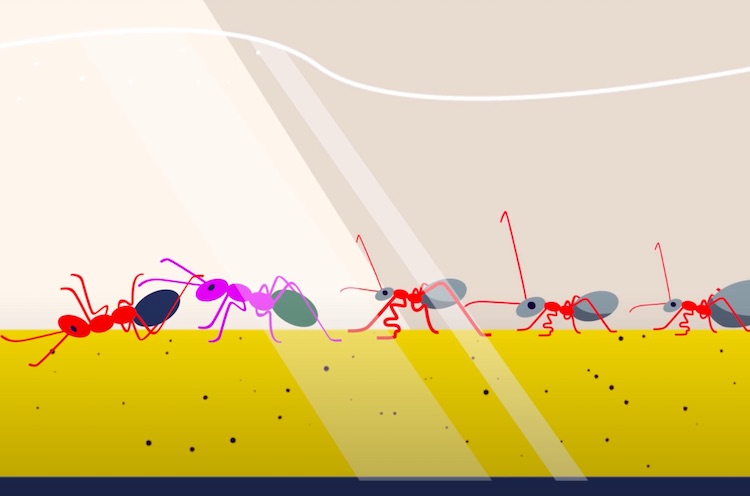The Link between Obesity and Diabetes
Epidemiologist Nick Wareham on metformin, preventive therapy of diabetes, and metabolism in obese people

On January 16, 2015 Molecular Ecology published a paper “Global invasion history of the tropical fire ant: a stowaway on the first global trade routes” describing how particular species of ants spread throughout the world with the assistance of people. We have asked one of the authors of this paper, Dr Dietrich Gotzek from University of Illinois Urbana-Champaign, to comment on this work.
We collected nuclear and mitochondrial genetic data of a large number of Tropical Fire Ants, Solenopsis geminata, from around the world. We were fortunate to get most samples from helpful and generous colleagues. Our sampling is not perfect, as we are missing samples from continental Africa and the northwestern part of the native South American range (Colombia, Ecuador) but are sufficient for us to go ahead with a larger-picture study.
The first step was to see whether we could identify any population-related genetic structure across the range of the Tropical Fire Ant. This was expected for an organism distributed across such a vast area and it was exactly what we found. We identified eight genetic clusters; five strongly differentiated clusters in the New World and three less strongly differentiated ones in the Old World. Such strong structure provides the ideal scenario for identifying a population as a source population and excluding others as potential sources or detecting mixing between clusters.
The three Old World clusters all showed evidence of reduced genetic variation in both the nuclear and mitochondrial genomes compared to the New World clusters — something which is expected if these populations are derived from a few founding individuals (a genetic bottleneck). This showed that the Old World fire ants are not native to these areas, but are introduced.
Finally, using various methods, we estimated genetic relatedness by comparing genetic similarity between clusters. This also allowed us to date when clusters diverged from one another. Our data supports that all the Old World clusters derived from the cluster in southern Mexico approximately 480 years ago. During this time, the Spanish set up a galleon trade route from Acapulco, Mexico to Manila, Philippines, where they traded New World silver for Chinese goods (1565 to 1815 CE). This effectively globalized trade in the 16th century and supplied ample opportunity for entire fire ant colonies to have been transported across the Pacific in the ballast soil. Surprisingly, our genetic data matches the historic trade routes very closely: we found evidence that the dispersal route of the ants went from Mexico to the Philippines to Taiwan (southern China) and from there across the Old World and eventually to Australia in the 19th century.
Despite being a relatively small group of ants, several fire ant species have become highly invasive and damaging pests. One of these species, the Red Imported Fire Ant, Solenopsis invicta, is one of the most highly damaging invasive pest ants in the world. As a result, it has been closely studied, making it the best-studied ant species in the world. However, the vast majority of fire ant research has focused on the invasive populations of this particular species in the southern part of the U.S., and we know very little about its biology in its native range in Argentina and Brazil. We know even less about the biology of other fire ant species, which have been largely neglected by science, even though some of these are also invasive. As a result of our very narrow focus, we have no real understanding of how far our knowledge of the Red Imported Fire Ant sheds light on the other invasive ants or invasion biology in general.
My colleagues and I, who have been studying the evolution, genetics and systematics of fire ants, seek to address this shortcoming by studying the lesser-known fire ants. Recently, DeWayne Shoemaker, working at the USDA ARS in Gainesville, Florida, traced the world-wide invasion history of the Red Imported Fire Ant. This study provided the impetus to study the other invasive fire ant species. While I was visiting the USDA, DeWayne and I decided to conduct a similar study of the Tropical Fire Ant, thus allowing comparisons between more detailed analyses of the patterns and processes of invasion for both species, which would make conclusions more general and inferences stronger. We teamed up with my then-postdoctoral advisor, Andrew Suarez, an authority in invasive-ant biology, and Heather Axen, then a graduate student working with Sara Helms Cahan at the University of Vermont on the Tropical Fire Ant in Texas, who independently had a similar idea.
The study of invasion histories has benefitted greatly from the development and use of genetic markers. The evolutionary genomics of invasive species, such as S. invicta and S. geminata, is a topic of enormous current interest because invasive organisms pose major threats to biodiversity, ecosystem integrity, agriculture, fisheries and public health. The recent advent of genomic data not only allows estimation of invasion routes, but also allows simultaneous inference of other important parameters with unprecedented precision, such as when invasion occurred, how many founders were introduced, how quickly the new population expanded in its new habitat and what genomic changes occurred during the invasion process (adaptation). The latter is of interest because changes in variation of small numbers of genes can have profound impacts on colonization ability and invasion success, so genomic approaches involving analyses of gene expression, epistasis and gene rearrangements in invasive species may reveal much about how such genes act. Genomic data provide a rich resource for identifying polymorphisms segregating at genes that affect ecological and evolutionary success of invasive species in their natural environments and in elucidating the functional consequences of such variation.
Given the state of current globalized trade, we often assume that invasions are recent. Much research is focused on the deliberate or coincidental transport of animals and plants closely associated with humans (domestics, such as pigs or human commensals such as rats). This has been going on for thousands of years, but the homogenization of global flora and faunas due to trade is not a recent occurrence. We suspect that we will discover early trade, especially maritime trade, was important in setting up current distributions of widely distributed species, irrespective of whether or not they are invasive.

Epidemiologist Nick Wareham on metformin, preventive therapy of diabetes, and metabolism in obese people

Harvard Associate Prof. Shamil Sunyaev on protein evolution model, human disease mutations, and the help of di...

Neuroscientist Klaus Linkenkaer-Hansen on the biology of mind-wandering, training one's attention, and the rol...